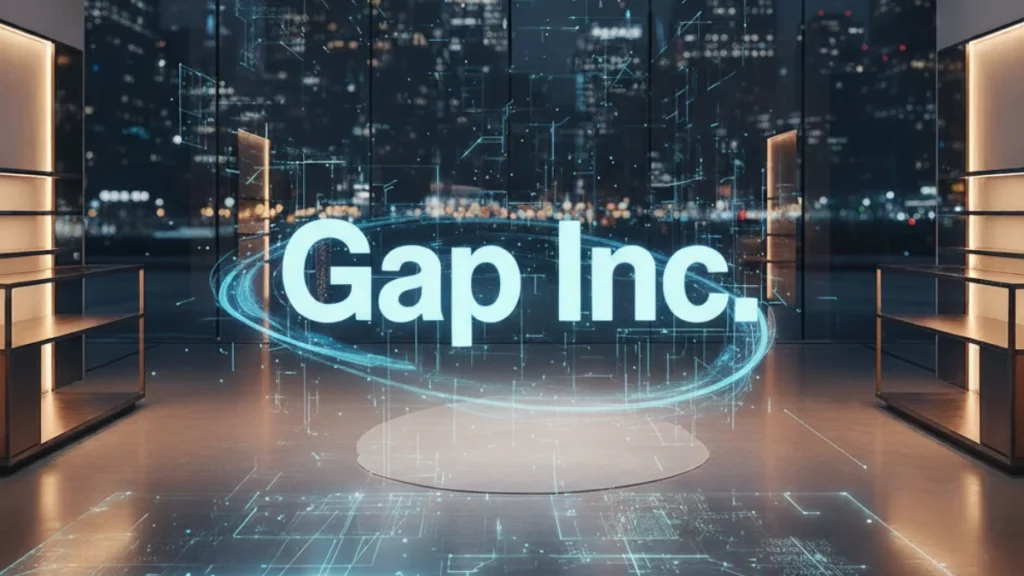Gap Inc. just announced a multi-year tie-up with Google Cloud to reimagine retail across its brands with AI at the core.
This bold pivot could redefine everything from product design to in-store experience — but execution will test whether ambition meets reality.
Key Takeaways
- Gap inks multi-year deal with Google Cloud to power AI across its brands
- AI will drive product innovation, customer personalization, employee workflows
- Partnership spans tools like Gemini, Vertex AI, BigQuery
- Gap already uses Google Ads AI for campaign optimization
- Success hinges on integration, data governance, and measurable ROI
Gap Inc. has entered a multi-year partnership with Google Cloud to build a unified, AI-powered platform. The initiative aims to transform product innovation, customer personalization, and employee workflows across Gap, Old Navy, Banana Republic, and Athleta. The goal: faster creativity, deeper engagement, and operational efficiency.
AI Takes the Center Stage in Gap’s Strategy
On October 9, 2025, Gap Inc. (NYSE: GAP) announced it is partnering with Google Cloud in a multi-year deal to drive an AI-infused transformation of its retail operations.
This alliance intends to inject artificial intelligence into how Gap designs, markets, and runs its businesses across Gap, Old Navy, Banana Republic, and Athleta.
Sven Gerjets, Gap’s Chief Technology Officer, captured the mood:
“AI is redefining what’s possible in retail, and we’re building our future technology roadmap around it.”
Thomas Kurian, Google Cloud CEO, added that only Google currently offers “a complete AI-optimized stack — from silicon to models to platform to apps and agents — that can deliver this kind of transformation.”
What Gap Expects to Gain
The press release outlines three pillars where Gap expects AI to make the biggest difference:
Product Innovation
AI tools will accelerate design, planning, and pricing cycles — reducing time from concept to shelf while injecting more agility into how Gap brings new ideas to market.
Customer Experience & Marketing
Gap plans to deliver hyper-personalized shopping, smarter recommendations, and seamless engagement powered by AI. The idea: more relevance, better storytelling, deeper loyalty.
In fact, Gap already works with Google Ads, leveraging Google’s AI to drive ad placements, optimize campaigns, and bolster omnichannel capabilities.
Employee Empowerment
Gap intends to embed AI into day-to-day workflows, making it a partner in both decision-making and execution. The hope is that teams will shift focus toward creativity, culture and connecting with customers — while AI handles more routine tasks.
Gerjets emphasized the human side:
“By redesigning our workflows and putting AI in the hands of every employee, we are freeing Gap Inc. teams to focus on creativity, culture, and customer connection…”
A Track Record & Risk Profile
Gap isn’t new to AI. In 2021, it acquired AI startup CB4, specializing in predictive analytics, to enhance inventory decisions and sales forecasting.
Still, embedding AI across a sprawling retail operation carries risks:
- Systems integration: Legacy systems, multiple brands, and global operations will be complex to unite under one AI platform.
- Data quality & governance: Personalization depends on clean, reliable data — privacy, bias, and consistency are challenges.
- ROI measurement: Gap must show material uplift from AI investments, or face internal skepticism.
- Talent & change management: Employees must trust and adopt AI tools instead of resisting them.
Market Reaction & Analyst Lens
As of this writing, detailed analyst commentary is still rolling in. The announcement’s scope — affecting everything from design to in-store operations — suggests Gap is going all in on AI, not just dipping a toe.
Investors and retail watchers will closely monitor whether Gap discloses rollout roadmaps, pilot results, and metrics (e.g., conversion lift, cost savings, design cycle time). These will serve as the litmus test for the partnership’s real-world impact.
Global Implications & Competitive Context
Gap’s move is part of a broader wave: retailers are doubling down on AI to compete in a digital-first world. For Google Cloud, it reinforces its positioning as one of the few providers offering end-to-end AI infrastructure and applications.
If Gap can execute at scale, it sets a case study: legacy brand transforms via AI, boosting relevance and efficiency. If it stumbles, it could deter others from ambitious AI bets.
What Happens Next & What to Watch
- Rollout timelines: Look for pilots or brand-by-brand phases.
- Performance metrics: Gap should begin reporting KPIs tied to AI (e.g. time to market, uplift in personalization yield).
- Competitive moves: Watch how fast rival retailers respond with their own AI strategies.
- Customer experience: In 12–18 months, consumers should begin seeing more personalized, responsive experiences across Gap’s channels.
Conclusion
Gap Inc.’s decision to partner deeply with Google Cloud and build AI at the heart of its retail engine is bold and high-stakes. If executed well, it could propel Gap into a new era of agility and relevance. But legacy complexity, data risk, and proof of results will determine whether this becomes a transformational play — or a cautionary tale.
